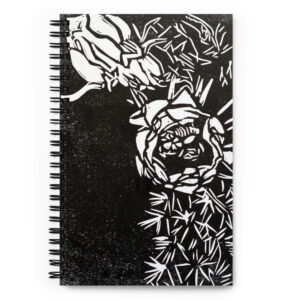
Explanation
Linocut is a form of relief printmaking where the negative space is carved out of a sheet of linoleum, hand inked, and pressure is applied leaving a relief image.
A Little History
The process was evolved from woodcut relief printmaking. It was originally used to stamp impressions into clay.
Printmaking was done this way for thousands of years until the invention of paper made it possible to make multiple impressions of the same image.
While the early stages of this kind of printmaking was for commercial reproduction of texts or illustrations, it evolved as another medium for artists.
Linoleum
Classic Linoleum is made up of linseed oil, rosin, and cork dust with a burlap backing. However, the newer versions are much more like vinyl or rubber sheets.
Linocut Process
Here is a short video where you can watch how the whole process of printmaking takes place.
A Mini Documentary of Artist Mary Vasquez
The Plan
Once I decide on a drawing I transfer it to a block of linoleum. Then I carve it out and begin to set up for printing.
Paper
I carefully cut the paper to the size I need, then I mix the ink into the colors I need.
Ink
Afterward, I ink the block and place the paper on top of the inked block.
Pressure
Then I run the whole thing through an etching press. After I am satisfied with the amount of ink and how the block looks, I repeat this process as many times as I want.
Edition
Then I sign and number or indicate the type of edition.
If you would like to find out what you need to start printmaking with linoleum click here.
Please feel free and take a look at the shop for more examples of a linocut print which are available for purchase.
If you would like to follow me on social media you can do that through Facebook or Instagram.


